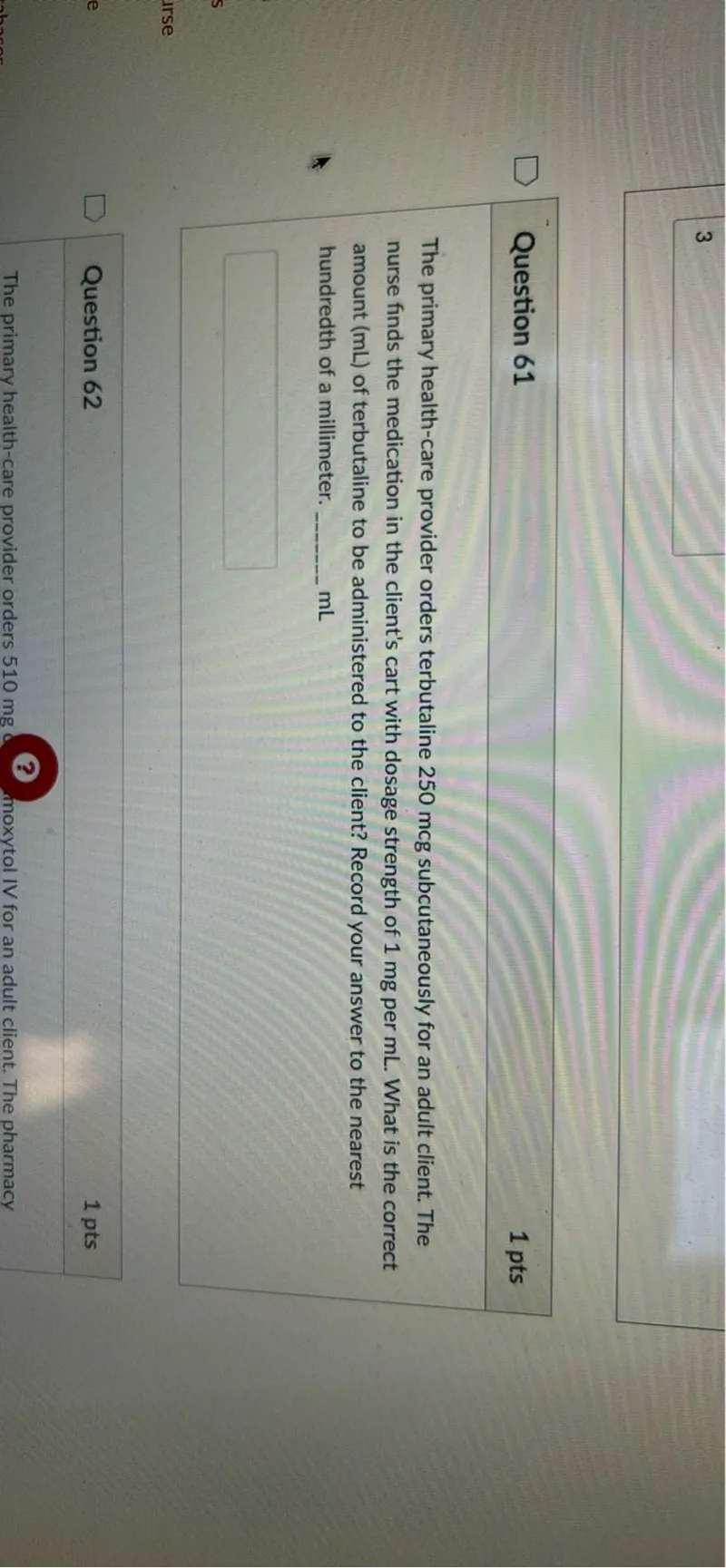Questions: The primary health-care provider orders terbutaline 250 mcg subcutaneously for an adult client. The nurse finds the medication in the client's cart with dosage strength of 1 mg per mL. What is the correct amount (mL) of terbutaline to be administered to the client? Record your answer to the nearest hundredth of a millimeter. mL

Transcript text: The primary health-care provider orders terbutaline 250 mcg subcutaneously for an adult client. The nurse finds the medication in the client's cart with dosage strength of 1 mg per mL. What is the correct amount (mL) of terbutaline to be administered to the client? Record your answer to the nearest hundredth of a millimeter. mL





